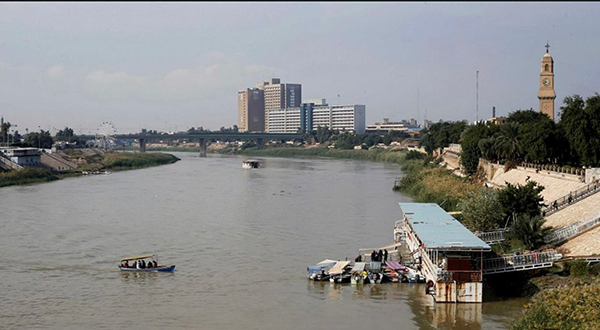by Wolfgang Sannwald
The author is an employee of the District Office Tübingen. He personally participated in the meetings of the administrative staff for the management of the Corona pandemic in the district of Tübingen from March 23rd to May 5th.
It was Shrove Tuesday, February 25th, 2020, when the Corona epidemic reached the district of Tübingen. Martina Guizetti, the press spokeswoman of the district administration office, remembers a call from the Landrat (chief of district administration) that evening. Joachim Walter was reacting from a carnival procession to the first detected infection in the administrative district. This was the second Corona case in the whole of Baden-Württemberg. The next day, the infected person was in the middle of a nationwide media interest. The district administrator’s office, to which the public health department belongs, received numerous press inquiries.
Three days later, the administrative staff for the management of the Corona pandemic met for the first time at the District Office in Tübingen. It already took precautions, although the number of infected people did not increase until after 10th March, but then rapidly. Little by little, infections that skiers had brought back from their carnival holidays in the Alps became visible. Since 26th March there have been more than 500 positively tested persons, since 7thApril more than 1000, at the beginning of May there were a little more than 1200. The district with its approximately 227.000 inhabitants was for a long time one of the most affected districts in Baden-Württemberg and also in the entire country.
As early as the beginning of March, a pattern in dealing with the crisis became apparent which has remained consistently visible from the perspective of the district ever since: “The local citizen perceives the state in the form of the municipalities, everything else is far away,” says Chief of District Administration Joachim Walter. The district took several steps against the spread of the Corona virus, always days before instructions, regulations or even promises of money from higher authorities arrived.
Philip Oltermann of the British daily newspaper “The Guardian” reflected in an article published on 5th April 2020 on how the world’s democracies are proving themselves in the Corona crisis. He said Germany was showing that its decentralised political system was coping much better with the crisis than many centralised states. Germany, for example, is far ahead of most other European countries in the number of Corona tests carried out, and the proportion of those infected who die is relatively low by international standards. The author of the Guardian drew particular attention to the organisational form of the public health system. Whereas in many other European countries uniform central authorities are responsible for public health, the legislator in Germany has incorporated the approximately 400 health authorities into local authorities, mostly into a district administrative office such as in Tübingen. The district offices and their heads, the county councils, have local knowledge, are well networked and see themselves as having “a great responsibility towards our inhabitants,” as the Chief of District Administration Walter said. A distinct strength of local responsibility in the event of a crisis is that the district has its own financial sovereignty. Therefore, it can dispose of money in an emergency in an unscheduled manner. In addition, the District Administrator can deploy employees from other areas of the District Office for crisis management. Five years before the Corona pandemic, the culture of decentralisation had already proved its worth in Germany in the reception and integration of refugees.
During the Corona pandemic, the District Administrator’s Office was initially concerned primarily with ensuring the most necessary requirements for disinfectants or protective clothing for medical practices, nursing homes, mobile care services, social services and dental practices. The number of purchased protective masks for mouth and nose shows how effectively the local authorities acted. The state of Baden-Württemberg, which was actually supposed to provide the supply, delivered around 0.2 million masks between 3rd March and 23rd April. In the district of Tübingen, the chief of the district fire department Marco Buess was at times jokingly considered a “forwarding agent”. The municipal official procured 3.6 million face masks on the national and worldwide market. Because the district office also knows the local factories and their potentials, it encouraged a chemical factory in Dußlingen to produce disinfectants for acute needs.
If there is a risk of infection, the public health authorities throughout Germany are responsible for infection control. In the first phase, they wanted to keep the number of seriously ill patients in the Corona pandemic low enough for clinics to be able to provide artificial respiration for every patient if necessary. Scientists say that the infection can be contained if contagious people are identified and quarantined. To test for the Corona virus, medical personnel must use a cotton swab to wipe samples from the mucous membranes in the throat area and send them to laboratories. All this, the testing, its evaluation and the order of quarantine are arranged by the health authorities. In the district of Tübingen, the public health office normally has around 25 employees. In March and April, the District Office tripled this number of specialist staff at short notice. Help was provided by about 50 of the 900 colleagues in the district administration.
Dr. Lisa Federle, chairwoman of the German Red Cross (DRK), contributed considerably to the expansion of Corona tests in the district of Tübingen. District Administrator Joachim Walter and the district administration took up her commitment with appreciation and provided all that was needed. In this case it became clear that local networks can quickly bring useful initiatives to bear. Nationwide, such initiatives often run the risk of getting caught up in a network of unclear responsibilities. Federle and the DRK initially operated a mobile test centre in consultation with the health authorities. When the demand increased further, the district planned and realised a drive-in test station in containers at the Tübingen fairground within five days. Since 12th March, more than 4000 people have been tested here. At the same time, Federle and the DRK carried out around 3000 tests in old people’s and nursing homes in April. This was important because older people are particularly susceptible to the disease: The average age of the 40 people who died due to the Corona infection in the district of Tübingen up till April 23rd was 85 years, 15 had lived in nursing homes for the elderly.
Thanks to all these measures and those taken by university hospitals and GP practices in the district of Tübingen, a total of almost 11.000 tests had been carried out by 23rd April. At times, the test quota was four times and later twice as high as the national average. And this despite the fact that the state had not even settled the question of costs at that time. Beyond its duties, the District Office was also involved in the treatment of fever sufferers. Physicians were unable to tell at short notice whether a person with fever had to be isolated at great expense as a Corona patient. At the same time, they had to treat their “normal” patients. Clinics also faced the problem of being overrun by fever patients. For this reason, the District of Tübingen and the German Red Cross additionally set up a fever outpatient clinic with containers for treatment rooms and a disinfection station on the Tübingen fairground on 23rd March. Up till 20th April 2020, doctors working here had treated 766 patients. At times, the district even operated a bus line to the test centre and fever outpatient clinic for people from the entire district.
The interest shown by the national media in the first Corona-infected person in the district of Tübingen at the end of February made the case a sensation. At that time, national television stations and some national daily newspapers were looking for hard information as well as evaluation, political statements and speculation about possible consequences. However, many of the issues raised still lacked data and scientific analysis. Scientists and experts only gradually worked out concrete rules for correct behaviour. In such instances, people expect local administrations to provide concrete help, or at least to indicate that they are there for them. Already on 2nd March – there was still only one single case of Corona in the district – a telephone hotline of the district administration office went online. The district gradually trained around 200 of its employees to use the hotline to provide valuable information. At times, eight people were working here simultaneously seven days a week from 8 a.m. to 6 p.m. By April 30th, more than 12,500 calls had been answered.
Since the beginning of May, there have been significantly fewer than ten new Corona infected people in the district of Tübingen every day. About 1000 of the infected persons should have recovered by now. However, this is not the all-clear: virologists fear a further increase in the number of infected people if people do not observe the prescribed minimum distance of 1.5 metres and other hygiene regulations. From his office in the district administration office, Chief of District Administration Walter keeps a watchful eye on the test centre and fever outpatient clinic on the opposite fairground. At the beginning of May, he often gave a sigh of relief: “There is almost nothing going on over at the fairground”.
tun050604
Impressionen zum Leben in Zeiten der Corona-Pandemie: Foto: tünews INTERNATIONAL; Mostafa Elyasian, 11.04.2020



